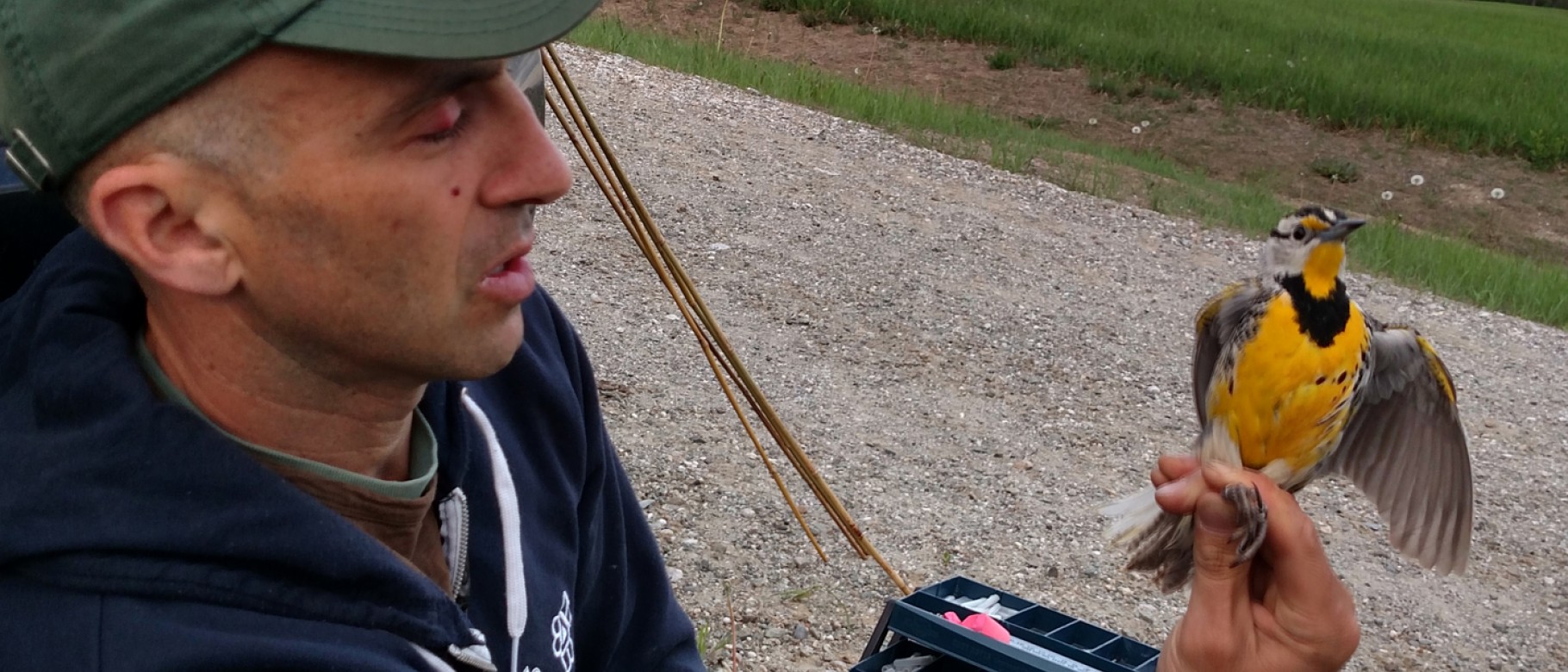UNE ornithologist Noah Perlut writes guest blog for Natural Resources Council of Maine on university’s use of bird-friendly glass in Ripich Commons

Noah Perlut, Ph.D., associate professor in the Department of Environmental Studies, was recently asked to write a guest blog for the Natural Resources Council of Maine (NRCM) about UNE’s decision to construct its newest building, the Danielle N. Ripich Commons, using bird-safe glass. The blog was published on March 22 on the NRCM website.
In the blog, titled “How and Why We Invested in Bird-friendly Glass at the University of New England,” Perlut explains that shortly after UNE released a schematic of the then-unnamed campus center building (featuring “three-story sweeping glass walls overlooking the Saco River and a glass walkway connecting to nearby Ketchum Library”), he showed the film The Messenger to his Avian Ecology and Conservation class. The film discusses bird fatalities that result from window strikes, and it closes with an impactful scene of people sorting through thousands of birds that died after colliding with windows in Toronto.
The timing of the viewing of the film and the release of the new building’s plans prompted Perlut’s students to take action, and one student in particular, Adrienne Bowie ’17, created a petition requesting that bird-safe glass be utilized in the building’s construction. In the blog, Perlut recognizes the students for their commitment to the issue and credits former President Danielle Ripich, who “was moved by the thoughtful and well-supported petition and decided bird-friendly glass was the way to go…”
Perlut states: “UNE is not a wealthy institution; we are extremely careful in how we partition our resources. The decision to invest in bird-friendly glass came with significant financial implications and involved cost-cutting in other ways. But the data were clear: in the United States, approximately 600 million birds die annually from collisions with buildings. Our community wanted to minimize the role of the Ripich Commons in this statistic.”
To learn more about the College of Arts and Sciences, visit www.une.edu/cas
To apply, visit www.une.edu/admissions